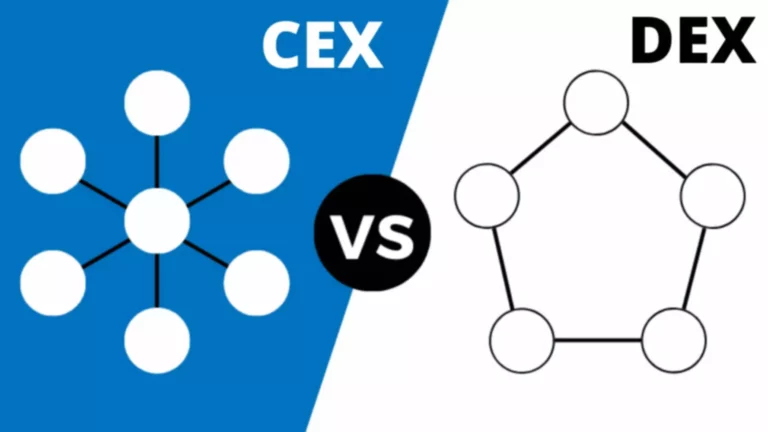ETFs: 3 Levels of Liquidity for Greater Market Access
Content
While trading volume can indicate liquidity, it’s not the whole story. An ETF can have good liquidity even with lower trading volumes because of the creation and redemption mechanisms. If creations and https://www.xcritical.com/ redemptions are easily facilitated, the actual trading volume in the ETF may not matter as much.
Five misconceptions about ETF liquidity?
However, with over 10,000 ETFs listed globally, Proof of personhood a multitude of investment strategies now exist.2 ETFs now cover a wide variety from passive to active strategies with various shades in between, across a multi-asset spectrum. Factors such as fund size, market making, fund sponsor reputation, and the expense ratio can influence an ETF’s liquidity profile. By daily trading volume, the S&P 500 SPDR (SPY), Invesco QQQ (QQQ), and Financial Select Sector SPDR (XLF) tend to be among the most active ETFs.
- However, with over 10,000 ETFs listed globally, a multitude of investment strategies now exist.2 ETFs now cover a wide variety from passive to active strategies with various shades in between, across a multi-asset spectrum.
- Knowing more about liquidity in the primary and secondary markets may help you evaluate ETFs more strategically.
- The information in this document has been prepared without taking into account any investor’s investment objectives, financial situation or particular needs.
- Views expressed are as of the date indicated, based on the information available at that time, and may change based on market or other conditions.
- Below are a few common types of ETFs — just note that these categories aren’t categorized by management type (passive or active), but rather by the types of investments held within the ETF.
- Whether it’s at the grocery store, the mall or the gas station, a penny saved truly is a penny earned.
Trading Volume Does Not Equal Liquidity
Shares may trade at a premium or discount to their NAV in the secondary market. The creation and redemption process helps keep supply and demand in balance and leads to an ETF share price that is generally in line with the value of the underlying securities. The average daily volume (ADV) has always been a strong indicator of liquidity for stocks, but it’s a common misconception etf liquidity providers that it’s the sole indicator of an ETF’s liquidity.
Misconceptions About ETF Liquidity

Gain investment clarity in Asia Pacific through our research, specialized insights, and thought leadership.
A seller can also transact at a price that is not too low relative to the price on the screen or the NAV of the fund. Buying and selling at good prices, improves financial returns for investors from the ETF. It also gives long term holders peace of mind that they can convert holdings to cash should the need arise.
ETFs are widely available commission free on most online brokerage accounts and through investment professionals. You can also purchase directly through platforms like Fidelity, where iShares ETFs trade commission-free online. This information should not be relied upon as research, investment advice, or a recommendation regarding any products, strategies, or any security in particular.
Frontier markets generally have less developed capital markets than traditional emerging market countries, and, consequently, the risks of investing in foreign securities are magnified in such countries. Creation is the process by which Authorized Participants (APs) introduce additional shares to the secondary market. During this process, APs deliver the underlying securities to the fund sponsor in return for ETF shares. ETF liquidity matters as good liquidity ensures a smooth, efficient and frictionless transaction of ETF units on the market. In high liquidity ETFs, a buyer can transact at a price that is not too high relative to the price they see on the screen or the NAV of the fund.
Passively managed funds invest by sampling the index, holding a range of securities that, in the aggregate, approximates the full Index in terms of key risk factors and other characteristics. This may cause the fund to experience tracking errors relative to performance of the index. While the shares of ETFs are tradable on secondary markets, they may not readily trade in all market conditions and may trade at significant discounts in periods of market stress. Passive management and the creation/redemption process can help minimize capital gains distributions. Primary Market The market where Authorized Participants (APs) create and redeem ETF shares in-kind, typically in blocks of 50,000 shares, which are known as creation units.

Ultimately, as long as the AP can effectively and efficiently trade the underlying basket of securities, these demand and supply imbalances can be adjusted continuously. At the same time, ETF shares can be created and redeemed in the so-called ‘primary market’ like a traditional mutual fund. Furthermore, beginners should understand that ETF shares function in both primary and secondary markets. The primary market is open for ETFs and Authorized Participants only, while private investors may buy and sell shares on the secondary market.
There can be no assurance that forward-looking statements, including any projected returns, will materialize or that actual market conditions and/or performance results will not be materially different or worse than those presented. This document has been prepared only for those persons to whom Invesco has provided it for informational purposes only. This document is not an offering of a financial product and is not intended for and should not be distributed to retail clients who are resident in jurisdiction where its distribution is not authorized or is unlawful. Circulation, disclosure, or dissemination of all or any part of this document to any person without the consent of Invesco is prohibited.
Fourth, higher assets under management (AuM) does often mean higher liquidity, though the converse is not true. Higher AuM also means investors with minimum AuM hurdles can start to trade. These are usually institutional investors who trade in large amounts creating liquidity for other investors. First, even if on screen volume looks low, the liquidity of the underlying assets is the most important determinant of how liquid an ETF is.
It encompasses not only the trading of the ETF shares themselves but also the liquidity of the underlying securities in the ETF’s portfolio. And it’s the vehicle’s unique creation and redemption process that gives it the depth of liquidity to dynamically respond to investor supply and demand. Given their relationship with market participants and insight into primary and secondary market activity, they are a critical resource for investors looking to execute large ETF trades efficiently. Simultaneously making offers to buy (bid) and sell (ask) securities at specified prices, market makers provide two-sided liquidity to other market participants.
The value of the shares is closely tied to acceptance, industry developments, and governance changes, making them susceptible to market sentiment. Digital assets represent a new and rapidly evolving industry, and the value of the Shares depends on their acceptance. A disruption of the internet or a digital asset network would affect the ability to transfer digital assets and, consequently, would impact their value. International ETFs provide investors exposure to stocks and bonds from individual countries, like India; regions and subregions, like Latin America; and specific types of economies, including developed, emerging and frontier.
